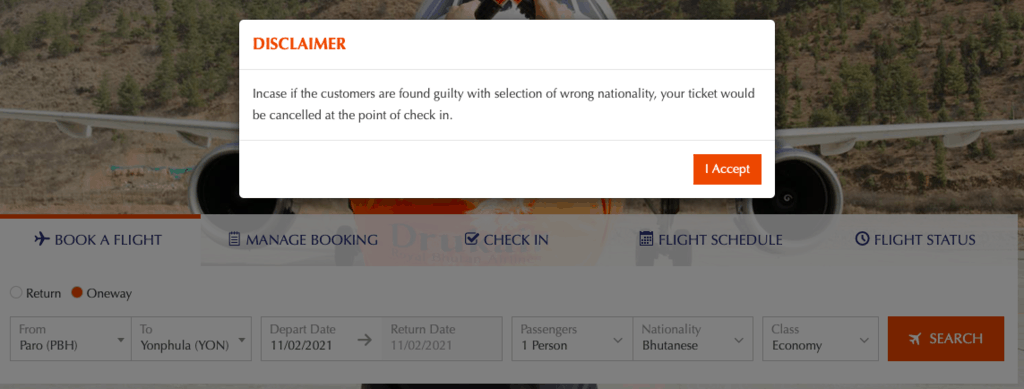The Cheapest & Most Expensive Countries for Domestic Flights
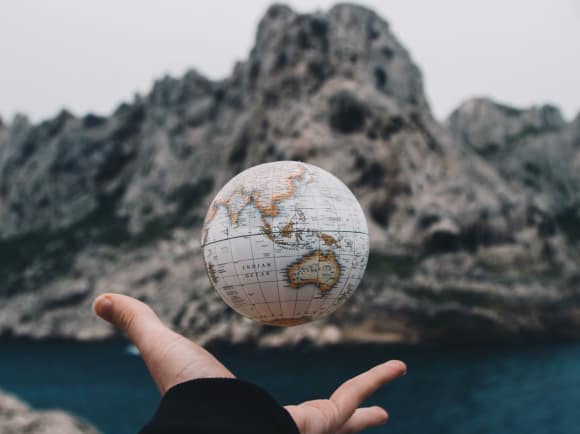 Norway, one of the world’s wealthiest countries, has the world’s cheapest domestic flights. Meanwhile, Greenland and the Democratic Republic of Congo have the world’s most expensive domestic flights.
Norway, one of the world’s wealthiest countries, has the world’s cheapest domestic flights. Meanwhile, Greenland and the Democratic Republic of Congo have the world’s most expensive domestic flights.
Australian Frequent Flyer has analysed the typical cost of domestic flights in 94 countries that are large enough to have them. Australia ranked 59th out of 94, with the cheapest flight on a typical Australian domestic route costing slightly more than the global average.
To ensure fair comparisons, we determined the lowest regularly-available airfare (excluding extra ancillaries like baggage) on a typical domestic route – either between each country’s two largest cities, or two major cities within a 60-90 minute flight of each other. For example, we used the Sydney-Melbourne route for Australia, Los Angeles-San Francisco for the USA and Berlin-Munich for Germany. But we didn’t include countries like Singapore or the Netherlands which are too small to support domestic flights.
Here are the full results (note that all prices quoted are in AUD)…
Countries with the least and most expensive domestic flights
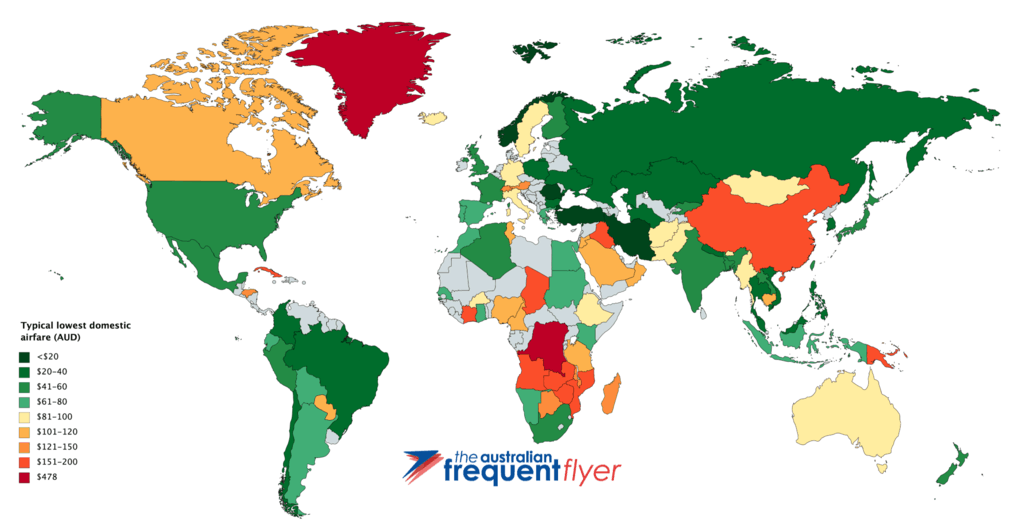
With flights between Oslo and Bodø (a typical 90-minute domestic flight) regularly available for just NOK99 ($16) one-way on Wizz Air, Norway has the cheapest domestic flights of anywhere in the world.
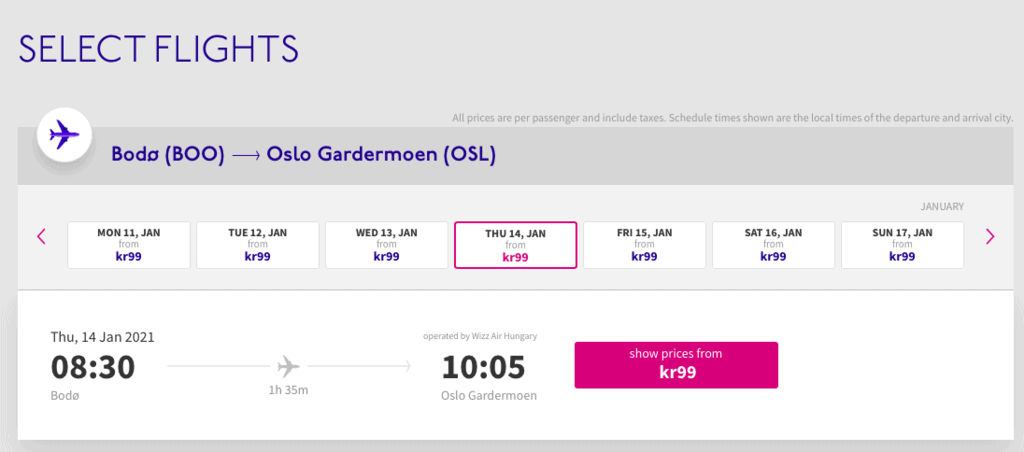
Norway was very closely followed by Romania, Turkey and Iran.
Here are the top 10 countries with the cheapest domestic flights:
- Norway ($16 for Oslo-Bodø on Wizz Air)
- Romania ($17 for Bucharest-Cluj on Blue Air)
- Turkey ($17 for Istanbul-Ankara on Pegasus Airlines)
- Iran ($18 for Tehran-Shiraz on Qeshm Air)
- Chile ($24 for Santiago-Concepcion on LATAM Airlines or JETSMART)
- Colombia ($24 for Bogota-Medellin on Viva Air)
- Philippines ($28 for Manila-Cebu on Philippine Airlines)
- Kazakhstan ($30 for Almaty-Nursultan on SCAT Airlines)
- Malaysia ($30 for Kuala Lumpur-Penang on AirAsia)
- Ukraine ($30 for Kiev-Zaporizhzhia on SkyUp Airlines)
And here are the top 10 most expensive countries for domestic flights:
- Democratic Republic of Congo ($478 for Kinshasa-Lubumbashi on Congo Airways or Compagnie Africaine d’Aviation)
- Greenland ($478 for Nuuk-Kangerlussuaq on Air Greenland)
- Marshall Islands ($284 for Majuro-Kwajalein on United Airlines – flown once per week, not shown on map)
- French Polynesia ($241 for Papeete-Raiatea on Air Tahiti – not shown on map)
- Zambia ($191 for Lusaka-Ndola on Proflight Zambia)
- Cuba ($189 for Havana-Santiago de Cuba on Cubana)
- New Caledonia ($185 for Noumea-Lifou Island on Air Caledonie – not shown on map)
- Chad ($183 for N’Djamena-Moundou on Ethiopian Airlines)
- Mozambique ($160 for Maputo-Beira on LAM)
- Angola ($158 for Luanda-Huambo on TAAG Angola Airlines)
In the case of the Democratic Republic of Congo, there’s actually competition on the Kinshasa-Lubumbashi route. But both airlines charge USD340 (AU$478) for tickets. It just so happens that Air Greenland charges DKK2,102 (which is also AU$478 at current exchange rates) for its most popular domestic route. However, the average Greenlander earns ten times as much as the average Congolese citizen – so the relative cost in the Democratic Republic of Congo is far higher.
The countries where people can most and least afford domestic flights
With the exception of Greenland, it seems many of the countries with the most expensive domestic flights are poorer countries where the local residents can least afford those expensive flights. Some are also small island nations where air is the only realistic way to quickly travel between islands.
In case COVID-19 hasn’t already done so, this further highlights the fact that travel is a privilege we shouldn’t take for granted. In many countries, getting on a plane is not a trivial thing like taking the bus to work!
To put this into persepective, we also roughly calculated the typical domestic airfare price as a percentage of the average annual household income in each country. This map looks somewhat different:
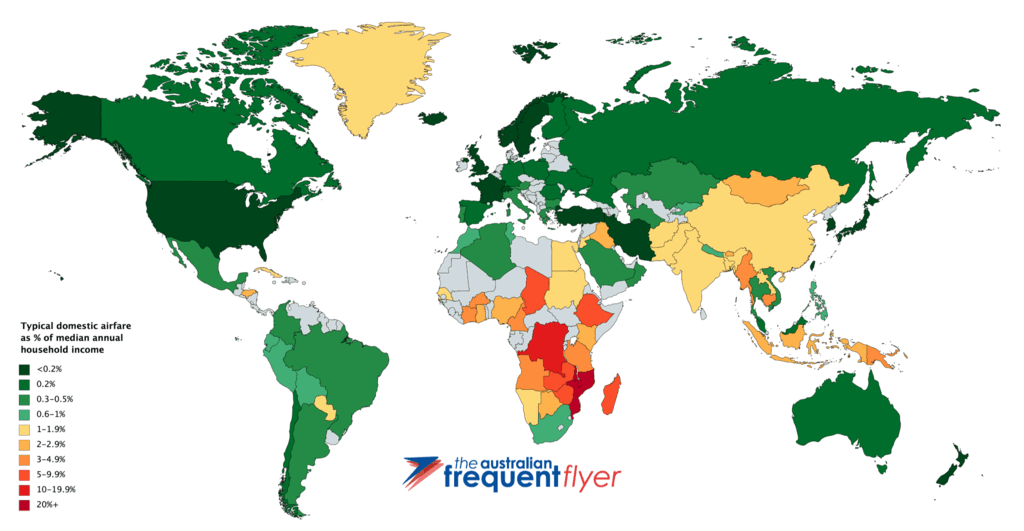
Interestingly, Norway is also the country where airfares cost the lowest proportion of average incomes. The average Norwegian household could theoretically afford to buy 3,218 WizzAir domestic flights every year, which is more than you could possibly fly in 12 months!
France took second place of the countries where citizens can most afford to buy flights, followed by Iceland, Iran, Japan, South Korea and New Zealand. Australia ranked 14th, just behind the United States.
Mozambique, Malawi, Democratic Republic of Congo, Zimbabwe and Madagascar are the countries where locals can least afford flights.
Some countries still charge foreigners much more for domestic flights
While conducting our research, we noticed that there are still quite a few countries where local residents are charged far lower airfares than foreigners. Such blatant price discrimination may irk overseas tourists, but in developing countries it’s also a more equitable approach because air travel may otherwise be unaffordable for the locals who rely on it.
To stop foreigners booking the cheaper, subsidised airfares for locals, some airlines even place warnings on their websites like this one from Bhutan’s Druk Air:
We found that airfare price discrimination still occurs in the following countries:
- Bhutan ($94 airfare for locals vs $305 for foreigners)
- Cameroon ($101 for locals vs $803 for foreigners)
- Ethiopia ($100 for locals vs $224 for foreigners)
- Maldives ($121 for locals vs $328 for foreigners)
- Nepal ($36 for locals vs $112 for foreigners)
- Peru ($45 for locals vs $195 for foreigners)
Some larger countries don’t have any scheduled domestic flights
One final thing worth noting is that only 94 countries appear to have domestic flights at all. Most of the other countries which don’t have domestic flights are simply too small to need them, and are well-connected by roads or railway lines.
But there are some countries, particularly in Africa, that lack a domestic flight network despite their size. For example, since Benin Airlines suspended its thrice-weekly service from Cotonou to Parakou, there are simply no regularly scheduled passenger flights available within that country. The only commercial option to travel by air within Benin right now would be to charter a 12-seater plane for around $7,900 round-trip. That’s simply unaffordable for most Beninese.
